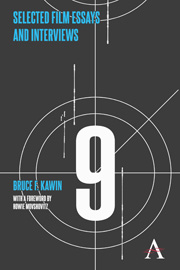Book contents
- Frontmatter
- Contents
- Foreword
- Preface
- PART I VIOLENCE AND POLITICS
- 1 Me Tarzan, You Junk
- 2 The Whole World Is Watching
- 3 Violent Genres
- 4 Wild Blueberry Muffins
- PART II HORROR AND SCIENCE FICTION
- PART III REVIEWS
- PART IV INTERVIEWS
- PART V LITERATURE AND NARRATION
- PART VI GETTING IT RIGHT
- Acknowledgments
- Index of Names and Titles
3 - Violent Genres
from PART I - VIOLENCE AND POLITICS
Published online by Cambridge University Press: 05 May 2013
- Frontmatter
- Contents
- Foreword
- Preface
- PART I VIOLENCE AND POLITICS
- 1 Me Tarzan, You Junk
- 2 The Whole World Is Watching
- 3 Violent Genres
- 4 Wild Blueberry Muffins
- PART II HORROR AND SCIENCE FICTION
- PART III REVIEWS
- PART IV INTERVIEWS
- PART V LITERATURE AND NARRATION
- PART VI GETTING IT RIGHT
- Acknowledgments
- Index of Names and Titles
Summary
This was written for Ron Gottesman's encyclopedia Violence in America, which appeared in 1999. The manuscript was called “Violent Film Genres, ” but in the encyclopedia the article appeared under the “Film” heading, so the title was changed. I mention this because I don't want the reader to expect some attempt here to cover all violent genres in all countries and all media; there's enough here as it is. I am grateful to Ann R. Cacoullos for helping me organize this piece, an attempt to update and summarize my thinking on violence in film despite its being limited to American movies from the twentieth century. For what it's worth, I have not seen anything in the twenty-first century that disproves what is said here.
I'm different from other people—pain hurts me!
—Daffy DuckMurder and bloody death are everywhere. In the Hollywood movie as surely as on network TV, hardly a crime is worth solving that doesn't involve a murder. Without the killings of an ape, an astronaut, and a computer, 2001: A Space Odyssey would have no plot. By the end of Oklahoma!, poor Jud is dead.
Since the 1960s, a decade that began with Psycho, American filmgoers' tolerance for onscreen violence has steadily increased. The camera looks at awful things instead of looking away, the sounds are sharper and louder, and the makeup and explosions and optical effects are ever more convincing. Even considering two films in the same subgenre (killer lovers on the run), both of which were perceived as shocking and irreverent when released, Natural Born Killers is far more violent than Bonnie and Clyde.
- Type
- Chapter
- Information
- Selected Film Essays and Interviews , pp. 22 - 30Publisher: Anthem PressPrint publication year: 2013

